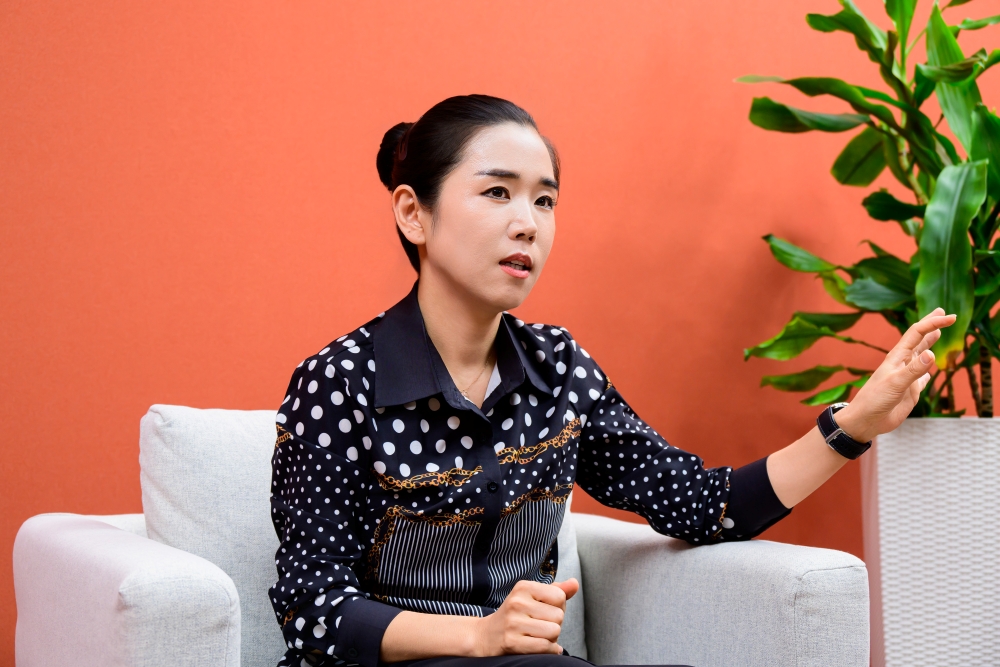Eating fruits and vegetables is essential for health, but their benefits are often hard to notice. What if the body’s response to diet were easier to see?
For the first time in a smartwatch, the Galaxy Watch8 series introduces Antioxidant Index — a feature that measures antioxidant levels to show how diet and lifestyle impact health.
Building on insights from part one with Hyojee Joung of Seoul National University, Samsung Newsroom spoke with Jinyoung Park of the Health H/W R&D Group, Mobile eXperience (MX) Business at Samsung Electronics, to discuss how the Galaxy Watch8 series’ sensor was developed.

From Food Logs to a Five-Second Scan
Tracking meal quality and nutrient intake has typically required detailed food logs or blood tests. With the Galaxy Watch8 series, users can instead press a thumb against the back of the device for about five seconds to measure carotenoid1 levels in the skin — displayed as an Antioxidant Index.
At the core of this process is Samsung’s advanced BioActive Sensor. “The sensor uses multi-wavelength absorption spectroscopy, shining light of various wavelengths onto the skin and analyzing the absorption and reflection patterns,” said Park. “The Galaxy Watch8 series is the first wearable to measure organic compounds in the body through skin absorption spectra.”
Carotenoids are electron-rich compounds made up of 40 carbon atoms that strongly absorb blue light — the principle behind Antioxidant Index. When the sensor emits yellow, blue, purple and green LED light, carotenoids absorb some wavelengths and reflect others. By analyzing the reflected light, their concentration can be measured. “Consistent consumption of fruits and vegetables leads to greater carotenoid accumulation in the skin, causing the index to rise,” she added.
Skin spectra also include signals from melanin and hemoglobin. “To minimize these effects, we chose the finger as the measurement site to reduce melanin interference and applied a pressing method to momentarily restrict blood flow and lessen hemoglobin’s impact,” Park explained. Even the simple act of pressing a thumb against the sensor reflects careful design and extensive consideration.
Miniaturizing Accuracy
Samsung began researching sensors for Antioxidant Index in 2018. The challenge was building a sensor small enough for a watch yet accurate enough to rival large laboratory equipment.
“Even the slightest change in the arrangement of LEDs and photodiodes could affect results,” Park recalled. “We conducted countless tests to find the optimal configuration.”

To ensure accuracy, the team validated the sensor using Raman spectroscopy — a laser-based technique widely used in research and clinical settings to detect the accumulated amount of skin carotenoids by measuring molecular vibrations. “Raman spectroscopy requires large, complex equipment, making it impractical for daily use,” she explained. “In the Galaxy Watch8 series, we applied skin reflection method based on LED-PD to miniaturize the sensor and improved accuracy by cross-checking results with Raman spectroscopy.”
The team also ran comparative studies with blood tests and clinical trials. “We validated the accuracy of noninvasive measurements by comparing carotenoid levels in blood with sensor readings,” said Park. “Clinical participants photographed and logged every meal for a week, allowing us to compare their fruit and vegetable intake against the sensor data. With a statistically significant sample of several hundred participants, we scientifically verified the sensor’s performance.”
Park stressed that collaboration was key to development. “In addition to long-standing work with Joung, we conducted clinical research with Samsung Medical Center and partnered with the University of Connecticut to collect data from diverse ethnic groups,” she added. “Experts in nutrition, medicine and consumer analysis formed a close network of collaboration that made commercialization possible.”
Getting the Most Out of Antioxidant Index
How often should Antioxidant Index be measured? “It usually takes two to three weeks for carotenoids from food to build up in the skin to detectable levels,” Park explained. “We recommend maintaining consistent healthy eating habits for at least two weeks and measuring once or twice a day at the same time.”
The Samsung Health app provides dietary tips based on Antioxidant Index and displays changes in clear reports. Users can view daily, weekly, monthly and yearly data to monitor health and lifestyle patterns over time.
Beyond diet, Antioxidant Index can also reflect changes in exercise and lifestyle. “Carotenoids decrease when free radicals are excessively generated in the body, causing Antioxidant Index to drop,” she added. “For example, it may fall temporarily after unusually intense exercise.”
Google Gemini — available on a smartwatch for the first time — adds another layer to Antioxidant Index. “I once asked Gemini to suggest nearby restaurants with antioxidant-rich foods, and it gave me helpful options,” Park recalled. “Combining Antioxidant Index with personalized AI could further expand tailored healthcare.”
A Health Interpreter on the Finger
Park described Antioxidant Index as an interpreter that translates daily meals and lifestyle rhythms through a small light on the finger. “We often don’t realize how we eat or how much stress we’re under,” she said. “I hope Antioxidant Index can serve as a health interpreter that helps people better understand their well-being.”
“Disease prevention begins with healthy eating and lifestyle habits,” she continued. “With chronic illness rising rapidly among younger generations, Antioxidant Index can provide meaningful guidance in building healthier routines.”
Park added that Antioxidant Index is just one part of the bigger picture. “The Galaxy Watch series and Samsung Health offer valuable features like Sleep Score and Energy Score,” said Park. “By integrating these functions, we aim to deliver more comprehensive insights and a wider range of health information to users.”
As living to 100 becomes increasingly common, the focus is shifting from lifespan to healthy aging. The Galaxy Watch series is poised to open the next chapter in personalized health management.

